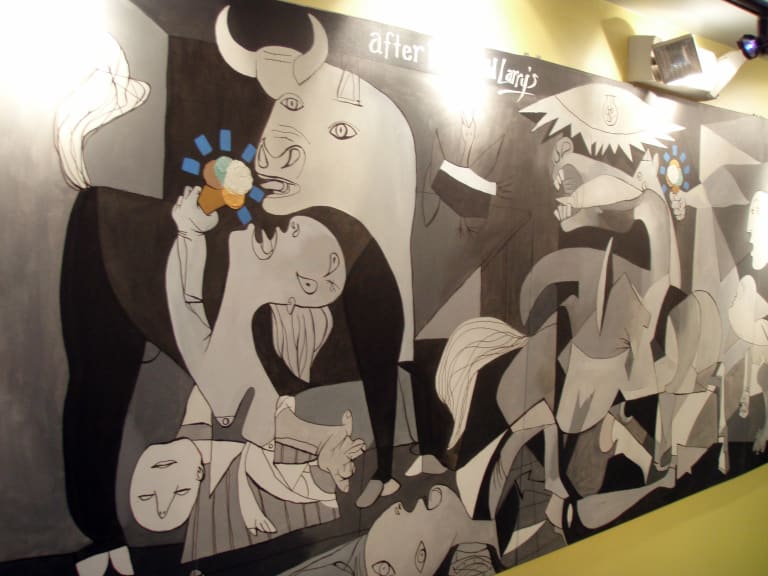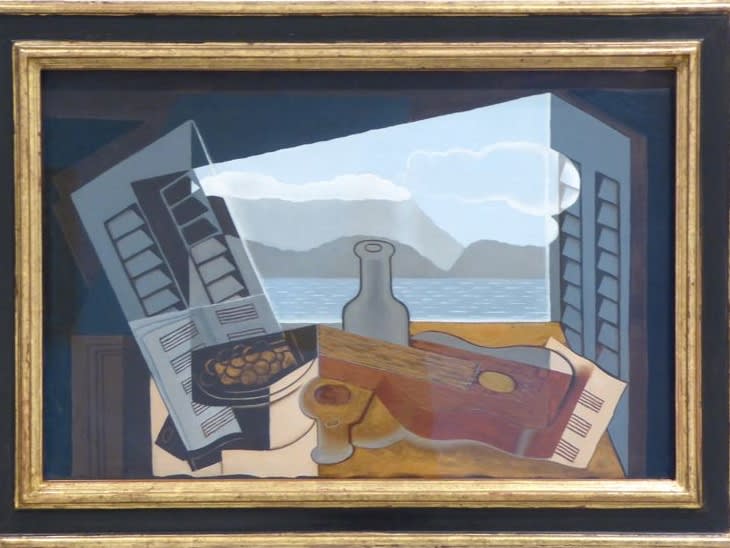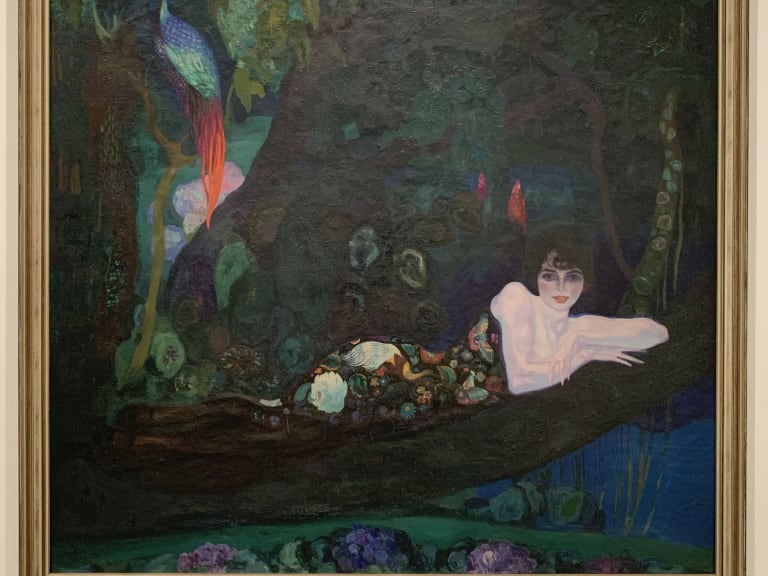More about: 11 Reina Sofia Museum Best Artworks
A visit to the Reina Sofía Museum is a must if you visit Madrid. It is located in the building of the old general hospital of Madrid next to Atocha station and forms part of the art triangle of Madrid together with the Prado and the Thyssen-Bornemisza museums.
It houses more than 18,000 pieces of 20th-century and contemporary art, signed by such famous artists as Salvador Dalí, Pablo Picasso and Joan Miró, and is open every day except Tuesdays and some public holidays. Here is a list of the 11 must-see pieces at the Reina Sofía, one of the best museums in Madrid and Spain.
1. Guernica, by Picasso

Pablo Picasso's Guernica is the museum's masterpiece, the one that attracts the most visitors and the most admired. This impressive painting, more than 7 metres wide and 3 metres high, depicts the suffering caused by the German bombing of the Basque town that gives its name to the painting in the unmistakable style of the Malaga-born artist.
Picasso painted it in 1937 to form part of the Spanish pavilion at the international fair in Paris. Although the state bought it that same year, the artist decided to donate it to the Moma in New York to protect it from the Second World War which was raging in Europe at the time.
It was not until 1981 that Spain recovered the work and in 1992, with the opening of the Reina Sofia Museum, it arrived at what is still its home and for which thousands of visitors come to see this impressive work. Without a doubt, it is worth booking a ticket to the Reina Sofia museum just to see El Guernica.
- Author: Pablo Ruiz Picasso.
- Date: 1937.
- Location: Room 205.10 of the Reina Sofia.
2. Face of the Great Masturbator, by Dalí

Salvador Dalí is one of the most unusual and eccentric artists known to man. And one of his most eccentric works, if I may say so, can be found in the Reina Sofia Museum. It is the Face of the Great Masturbator, a painting that you can admire if you book your ticket to the Reina Sofia Museum.
This autobiographical work, as Dalí himself recognised, reflects the author's deepest sexual obsessions through a painting with the unique stamp of the painter's surrealism. The author himself is depicted in the painting in various scenes.
His inspiration for this painting, as for many others, was his muse Gala. Salvador Dalí painted the picture in 1929 while enjoying Gala's company in Cadaqués, even though she was already married to the poet Paul Éluard.
- Author: Salvador Dalí.
- Date: 1929.
- Location: Room 205.13 of the Reina Sofía.
3. Snail, Woman, Flower, Star, by Joan Miró

Joan Miró was one of the most influential Spanish artists of the 20th century, as well as one of the most versatile, since in addition to being a painter, he was also a sculptor, engraver and ceramist. Although he himself experimented with various artistic movements such as Cubism and Fauvism, he has always been considered fundamentally a Surrealist artist.
The Reina Sofia Museum houses one of his most important surrealist paintings, known as Snail, Woman, Flower, Star. This painting, which you can see if you book tickets to the Reina Sofía Museum, belongs to a group that Miró himself called "wild paintings" and which arose as a result of the fear of the rise of fascism and the pre-war period in Spain in 1934, the year in which this painting was painted.
This feeling is represented by surrealist figures that give the work its name and dark colours. This is perhaps the artist's most famous painting of all those on display at the Reina Sofía.
- Author: Joan Miró.
- Date: 1934.
- Location: Room 205.04 of the Reina Sofía.
4. A world, by Ángeles Santos

Although the name of Ángeles Santos is not so well known, her work Un Mundo is one of the most surprising in the museum. This Girona-born artist was unaware of the artistic trends in Europe in the year she painted this canvas, 1929, so she surprised everyone with a groundbreaking, modern painting whose only inspiration came from the magazines and publications of the time.
The 3x3 canvas represents the imaginary world that the author invented when she was only 18 years old, shortly after taking her first painting classes in Valladolid. Such was the admiration she aroused that she received praise from great figures of the time such as Ramón Gómez de la Serna, Jorge Guillén and Lorca. Today, any visitor can be impressed and see the painting on display in the Reina Sofía Museum.
- Author: Ángeles Santos.
- Date: 1929.
- Location: Room 205.06 of the Reina Sofía.
5. Woman in Blue, by Picasso

Forgotten and unnoticed for many years, Pablo Picasso's Woman in Blue is today one of the most important works by the artist on display at the Reina Sofía.
It was one of the first works the artist painted when he arrived in Madrid in 1901, when he was artistic director of the magazine Arte Joven, where he coincided with several authors of the Generation of '98.
The painting, which depicts a portrait of a courtesan of the time, was part of one of the illustrations Picasso produced for the magazine, inspired by Van Gogh, El Greco and other great names. The author donated this painting to the Fine Arts exhibition in Madrid, after which it fell into oblivion for many years until it arrived at the Reina Sofía in 1988 and catapulted this work to fame.
- Author: Pablo Ruiz Picasso.
- Date: 1901.
- Location: Room 201.02 of the Reina Sofía.
6. *The Open Window, by Juan Gris

Still lifes have always been a source of inspiration for many artists, including Juan Gris with his work La Ventana Abierta (The Open Window). It forms part of a series of works inspired by what the artist saw through windows, the painting on display at the Reina Sofía being the most complete of them all.
The views in the painting represent the place where he painted the picture, the town of Bandol sur Mer, on the shores of the Mediterranean Sea in the south of France.
Through his window he saw the sea and against this background he depicted a still life with a highly original composition. Its importance lies in the artist's ability to paint several independent scenes on the same canvas.
- Author: Juan Gris.
- Date: 1921.
- Location: Room 204.03 of the Reina Sofía.
7. The House of the Palm Tree, by Joan Miró

Between 1916 and 1922, Joan Miró decided to travel in search of inspiration. This quest gave rise to a series of works that depicted different landscapes in detail. One of these works is entitled The House of the Palm Tree and is currently on display in the Reina Sofia Museum.
He painted this picture in 1918 when he spent the summer in Montroig and decided to capture one of the landscapes that inspired him. There is an immense amount of small details in the painting itself, which has led him to consider this painting as one of the author's first great pictorial milestones.
It is one of Miró's most important works in his pre-Surrealist period, which he began to work on from 1923 onwards.
- Author: Joan Miró.
- Date: 1918.
- Location: Room 207.02 of the Reina Sofía.
8. Girl at the Window, by Dalí

Contrary to popular belief, the young woman in this famous painting by Dalí is not Gala, but her sister Ana María. This painting of the Girl at the Window is one of the many studies Dalí made of his sister.
If you book a guided tour of the Reina Sofía Museum, they will explain that you will be struck by the realism with which Dalí captures this canvas, unlike the vast majority of works by an author characterised by extreme surrealism.
His sister's calm, relaxed pose and the bluish colours convey a tranquillity that also contrasts sharply with the anguish provoked by other of his works. This is Dalí's masterpiece as far as his sister's studies are concerned, and proof that Salvador Dalí also mastered painting in other facets than the one for which he is known.
- Author: Salvador Dalí.
- Date: 1925.
- Location: Room 205.06 of the Reina Sofía.
9. Sonia de Klamery, by Hermen Anglada Camarasa

Hermen Anglada Camarasa was a Barcelona-born modernist painter known for depicting the scenes that inspired him on his many travels and for his style of contrasts between light and shade and bright and dark colours. In this sense, his most famous work, or rather his most famous works, are Sonia de Klamery. And I say works in the plural because the artist depicted this figure in two different paintings in two different poses, lying down and standing.
In both he depicts Sonia Klamery, a Russian ballet dancer whom Hermen admired, in two different poses and with his characteristic contrast between the pale colour of the female figure's skin, the colourful dress and her dark background.
Thanks to these and other works, Hermen Anglada gained worldwide recognition as one of the great modernist authors of the time for his depiction of early 20th century society.
- Author: Hermen Anglada Camarasa.
- Date: 1913.
- Location: Room 201.02 of the Reina Sofía.
10. Lola, by Antonio Saura

Antonio Saura was an artist born in Huesca in 1930, a precursor of the Informalist art movement in Spain. He, together with other artists, founded the group "El Paso" in Madrid, which brought together followers of this movement that began in 1951. This movement was characterised by painting through "stains".
After travelling to Paris, Antonio Saura began a series of works under this trend. Many of them can be found in the Reina Sofía, but the most outstanding is the so-called Lola.
It is an almost abstract representation of a woman through thick strokes and stains in black on white. One of the most important works of Informalism in Spain.
- Author: Antonio Saura.
- Date: 1956.
- Location: Room 406 of the Reina Sofía.
11. Naipes and dice, by Georges Braque

Georges Braque is a French artist whose career ran parallel to that of Pablo Picasso until 1914, when he enlisted to fight in the First World War. On his return Braque took a different path from Picasso.
The canvas Cards and dice is a representation of the games of chance of the time and has the value of being one of the last works by Georges in which he shares aesthetics with Picasso and which you can contemplate if you book your ticket to the Reina Sofia Museum. The painting represents different games of chance such as cards and dice in an oval on a table with a complex composition.
- Author: Georges Braque.
- Date: 1914.
- Location: Room 204.01 of the Reina Sofía.




